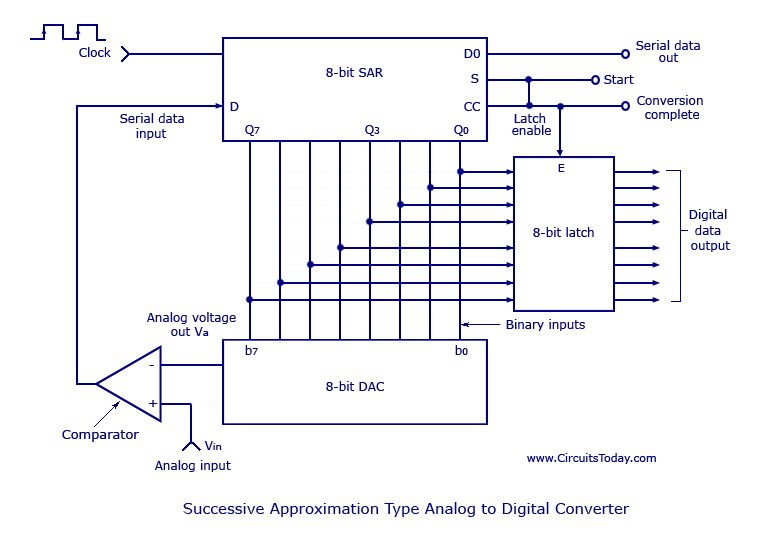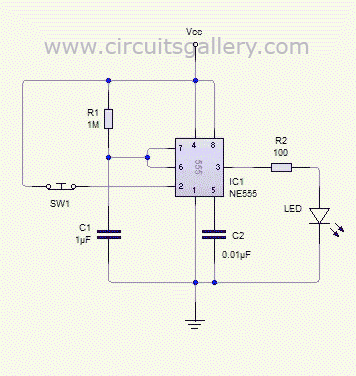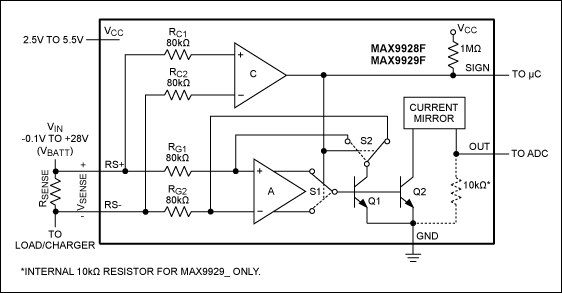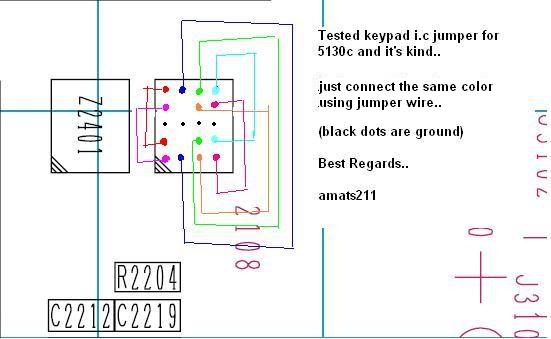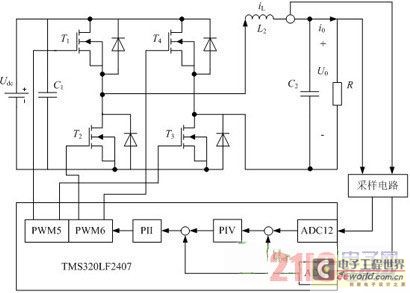
Working Principle Television (TV)

Before studying the working principles of a TV receiver, it is important to understand the journey of the image displayed on the television. The images seen on TV are produced by a camera. The object image captured by the camera lens is separated into three primary colors: red, green, and blue. These results are transmitted by the TV transmitter in the form of chrominance signals, luminance signals, and synchronization signals. In addition to images, television transmitters also carry voice signals transmitted alongside the picture signal. The images are transmitted using amplitude modulation (AM), while the sound is transmitted using frequency modulation (FM). Both systems are utilized to minimize noise and interference. The group assigned to the transmission frequency signal is referred to as a channel, with each channel occupying a 6 MHz bandwidth allocated to commercial television broadcasters. The circuit consists of a high-frequency (HF) amplifier, a mixer, and a local oscillator. The tuning circuit functions to receive the incoming TV signal and convert it to an intermediate frequency (IF) signal. This series acts as a signal booster, amplifying the signal up to 1000 times. The output signal from the tuner is typically weak and highly dependent on the distance between the transmitter and receiver, as well as the landscape position. A red circle indicates some of the IF circuitry within the tuner, which functions as a composite video signal detector that emerges from the picture IF amplifier. This circuitry also serves to suppress the sound signal, which can degrade image quality. The Automatic Gain Control (AGC) circuit stabilizes the input television signal's variations, ensuring a constant output. The red circle indicates components located within both the AGC and some tuner integrated circuits (ICs). The stabilizer circuit in the TV wave receiver includes AGC and Automatic Fine Tuning (AFT), which automatically adjusts the picture carrier frequency of the IF amplifier. This system comprises four blocks: the synchronization circuit, vertical deflection circuit, horizontal deflection circuit, and high voltage generator circuit. The sound produced is the result of this system, where the sound IF carrier signal is detected by the frequency modulator (FM). Prior to this, the signal is separated from the image carrier signal. The power supply circuit is delineated by a white line and red boxes. The area within the white line represents the input series, which is a high voltage (Live Area). In contrast, the area within the red box indicates the output power supply, which distributes DC voltage to the entire TV circuitry. This amplifier strengthens the frequency signal of 4.43 MHz for chrominance, modulating it into the V (RY signal) and U (BY signal) signals, with a 2 MHz bandwidth amplifier. The chrominance amplifier feeds the signal to the color splitter, which separates the modulated signals of V and U. The color splitting circuit, consisting of a PAL switch and several resistors, rotates the V signal by 180 degrees while the U signal remains unaffected. A color demodulator then demodulates the color difference signals from U and V. Due to the transmitter, the signals are modulated using a suppressed carrier system, leaving only the second sub-carrier sideband present. To demodulate the carrier signal back to its original color, a sub-carrier of 4.43 MHz with the same phase and frequency as that of the transmitter is required.
The TV receiver circuit operates by first capturing the broadcast signal through an antenna, which is then processed by the tuner. The tuner selects the desired channel, filtering out other frequencies, and converts the selected signal to an intermediate frequency (IF). This IF signal is then amplified by the IF amplifier, which boosts the signal strength to a usable level. The AGC circuit plays a crucial role in managing fluctuations in signal strength, ensuring that the output remains stable despite variations in received signal quality.
Following amplification, the composite video signal is extracted, which contains both the luminance and chrominance information necessary for image display. The sound signal is also processed in parallel, where the FM demodulator retrieves the audio information from the modulated carrier. The synchronization circuits ensure that the video and audio signals remain in sync, providing a coherent viewing experience.
The vertical and horizontal deflection circuits are responsible for controlling the electron beam in cathode-ray tube (CRT) displays or the pixel arrangement in modern LCD and LED screens. These circuits dictate the scanning process, which reconstructs the image line by line on the screen.
The power supply circuit is essential for providing the necessary voltages to various components within the TV receiver. It includes voltage regulators and filtering capacitors to maintain stable operation and minimize noise. The careful design of the power supply ensures that all parts of the circuit receive the correct voltage levels needed for optimal performance.
In summary, the function of a TV receiver involves a complex interplay of various circuits and components, each serving a specific purpose in the process of capturing, processing, and displaying audio-visual content. The integration of these systems is critical for delivering a high-quality viewing experience.Before we study the working principles of a TV receiver, it is worth knowing a little about the journey of the object image that we usually see on TV. Images that we see is the production of a camera. The object image captured camera lens will be separated into 3 primary colors of red (Red), green (Green) and blue (Blue).
Results will be emitted b y the TV transmitter (Transmitter) in the form cromynance signal, luminance signal and syncronisasi. Besides pictures, television transmitters also carry voice signals are transmitted along with the picture signal. Images transmitted by the system of amplitude modulation (AM), while the sound with a system of frequency modulation (FM).
Both systems are used to avoid the noise (noise) and interference. The group assigned to the transmission frequency signal is called channel (channel). Each has a 6 MHz channel in one field frequencies (bands) are allocated to commercial television broadcasters, namely: This circuit consists of booster high frequency (HF amplifier), mixer (Mixer) and local oscillator. Tuning circuit functions to receive the incoming TV signal and convert it to IF frequency signal. The series serves as a signal booster up to 1000 times. The resulting output signal tuner (Tuner) is a weak signal and very dependent on the distance transmitter, receiver and landscape position.
Red circle indicates that some of the IF circuit inside tuner. Functioning as a composite video signal detection that comes out of the picture IF amplifier. It also serves to muffle the sound signal which will result in poor image quality. AGC circuit serves to stabilize its own input television signal`s changing so that the output becomes constant. Red circle indicates the component that resides in some of AGC and some tuner IC. Stabilizer circuit TV wave receiver such as AGC and the AFT. Automatic Fine Tuning function set the picture carrier frequency of the IF amplifier automatically. This series consists of four blocks namely: synchronization circuit, a series of vertical deflection, horizontal deflection circuit and high voltage generator circuit.
The voice we hear is the work of this series, the sound IF carrier signal is detected by the frequency modulator (FM). Previously, this signal is separated from the carrier signal image: Rock On. In the figure, the power supply circuit is limited by the white line and red boxes. Areas within the white line is a series of inputs which is a region of high voltage (Live Area). Meanwhile, the area within the red box is the output power supply which then distributes the DC voltage to the entire TV series.
This amplifier strengthens the signal frequency of 4. 43 MHz for krominan are modulated in the signal V (RY signal) and signal U (BY signal). 2 MHz bandwidth amplifier. From krominan amplifier, the signal is fed to the color. Splitter (splitting color). It separates the color splitting the modulated signal with the signal V from the modulated signal with the signal U. Splitting the color of PAL switch and some resistors. At the end of each line, during the withdrawal line PAL then rotated 180 V signal. U did not experience signal phase rotation. Using a color demodulator, then the color difference signals in demodulation of the signal U and V. Because the transmitter, the signals were modulated with a carrier system suppressed / eliminated and only the second sub-carrier side line (side band sub carrier) that exist.
In order to demulation carrier signal into the original color back, then needed a sub carrier 4. 43 MHz with phase and the exact same frequency as the transmitter 🔗 External reference
The TV receiver circuit operates by first capturing the broadcast signal through an antenna, which is then processed by the tuner. The tuner selects the desired channel, filtering out other frequencies, and converts the selected signal to an intermediate frequency (IF). This IF signal is then amplified by the IF amplifier, which boosts the signal strength to a usable level. The AGC circuit plays a crucial role in managing fluctuations in signal strength, ensuring that the output remains stable despite variations in received signal quality.
Following amplification, the composite video signal is extracted, which contains both the luminance and chrominance information necessary for image display. The sound signal is also processed in parallel, where the FM demodulator retrieves the audio information from the modulated carrier. The synchronization circuits ensure that the video and audio signals remain in sync, providing a coherent viewing experience.
The vertical and horizontal deflection circuits are responsible for controlling the electron beam in cathode-ray tube (CRT) displays or the pixel arrangement in modern LCD and LED screens. These circuits dictate the scanning process, which reconstructs the image line by line on the screen.
The power supply circuit is essential for providing the necessary voltages to various components within the TV receiver. It includes voltage regulators and filtering capacitors to maintain stable operation and minimize noise. The careful design of the power supply ensures that all parts of the circuit receive the correct voltage levels needed for optimal performance.
In summary, the function of a TV receiver involves a complex interplay of various circuits and components, each serving a specific purpose in the process of capturing, processing, and displaying audio-visual content. The integration of these systems is critical for delivering a high-quality viewing experience.Before we study the working principles of a TV receiver, it is worth knowing a little about the journey of the object image that we usually see on TV. Images that we see is the production of a camera. The object image captured camera lens will be separated into 3 primary colors of red (Red), green (Green) and blue (Blue).
Results will be emitted b y the TV transmitter (Transmitter) in the form cromynance signal, luminance signal and syncronisasi. Besides pictures, television transmitters also carry voice signals are transmitted along with the picture signal. Images transmitted by the system of amplitude modulation (AM), while the sound with a system of frequency modulation (FM).
Both systems are used to avoid the noise (noise) and interference. The group assigned to the transmission frequency signal is called channel (channel). Each has a 6 MHz channel in one field frequencies (bands) are allocated to commercial television broadcasters, namely: This circuit consists of booster high frequency (HF amplifier), mixer (Mixer) and local oscillator. Tuning circuit functions to receive the incoming TV signal and convert it to IF frequency signal. The series serves as a signal booster up to 1000 times. The resulting output signal tuner (Tuner) is a weak signal and very dependent on the distance transmitter, receiver and landscape position.
Red circle indicates that some of the IF circuit inside tuner. Functioning as a composite video signal detection that comes out of the picture IF amplifier. It also serves to muffle the sound signal which will result in poor image quality. AGC circuit serves to stabilize its own input television signal`s changing so that the output becomes constant. Red circle indicates the component that resides in some of AGC and some tuner IC. Stabilizer circuit TV wave receiver such as AGC and the AFT. Automatic Fine Tuning function set the picture carrier frequency of the IF amplifier automatically. This series consists of four blocks namely: synchronization circuit, a series of vertical deflection, horizontal deflection circuit and high voltage generator circuit.
The voice we hear is the work of this series, the sound IF carrier signal is detected by the frequency modulator (FM). Previously, this signal is separated from the carrier signal image: Rock On. In the figure, the power supply circuit is limited by the white line and red boxes. Areas within the white line is a series of inputs which is a region of high voltage (Live Area). Meanwhile, the area within the red box is the output power supply which then distributes the DC voltage to the entire TV series.
This amplifier strengthens the signal frequency of 4. 43 MHz for krominan are modulated in the signal V (RY signal) and signal U (BY signal). 2 MHz bandwidth amplifier. From krominan amplifier, the signal is fed to the color. Splitter (splitting color). It separates the color splitting the modulated signal with the signal V from the modulated signal with the signal U. Splitting the color of PAL switch and some resistors. At the end of each line, during the withdrawal line PAL then rotated 180 V signal. U did not experience signal phase rotation. Using a color demodulator, then the color difference signals in demodulation of the signal U and V. Because the transmitter, the signals were modulated with a carrier system suppressed / eliminated and only the second sub-carrier side line (side band sub carrier) that exist.
In order to demulation carrier signal into the original color back, then needed a sub carrier 4. 43 MHz with phase and the exact same frequency as the transmitter 🔗 External reference
